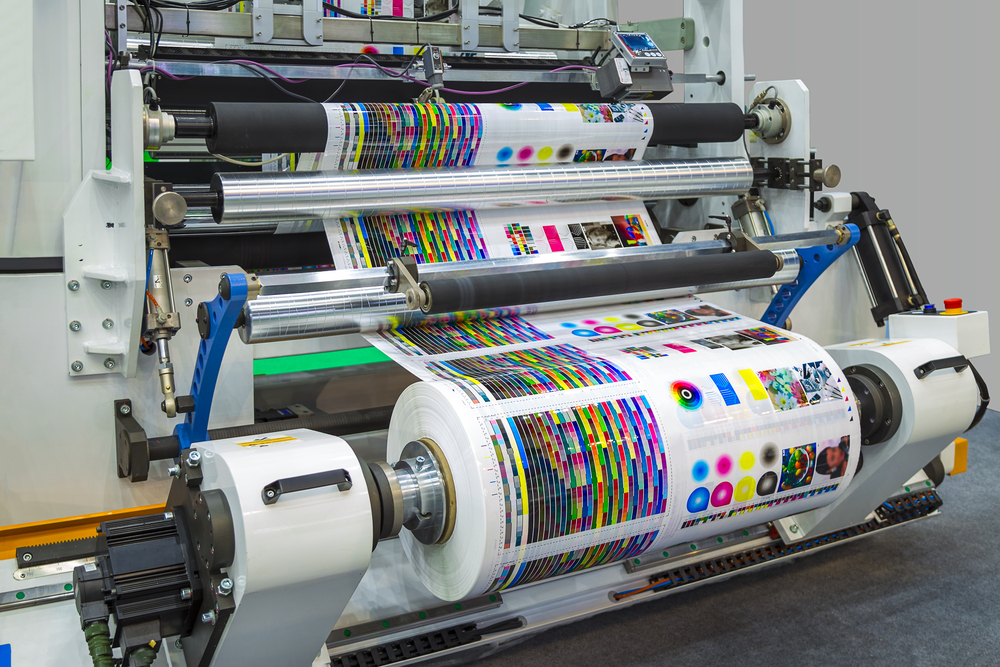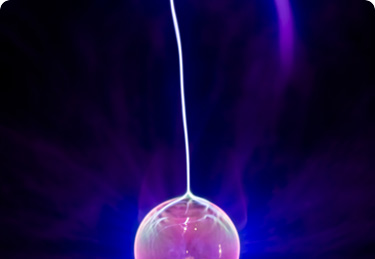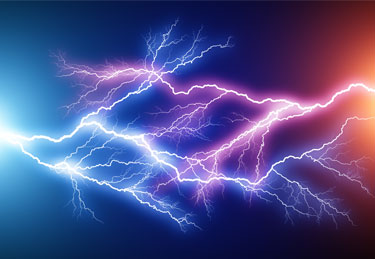Search
Shocking: Printing, Solvents & Thin Films

Readers of Process Safety Dispatch will be used to our occasional articles on electrostatic hazards. In this special piece, we stick with static electricity but look at an industrial sector we have not covered before; the printing industry. In fact, some of the safety issues (and manufacturing problems) experienced by the print industry due to static electricity are to be found in many other industrial settings where flammable solvents are handled – and where thin plastic films are involved – for example in wrapping/ packaging processes. Read on for more….
Electrostatics, Flammable Solvents and Thin Plastic Films
In this article, we will explore the hazards and problems caused by static electricity in the printing industry – and then take a look at how they can be prevented.
Fact 1: Substrates moving quickly through printing equipment of most types can readily pick up large quantities of electrostatic charge.
Fact 2: Many printing operations involve flammable materials, such as inks, coatings, and cleaning solvents creating significant fire and explosion risks. These flammable materials not only include low flashpoint chemicals such as, isopropyl alcohol, acetone, , methyl ethyl ketone, , ethyl acetate, toluene, xylenes and others, but also paper dust and spray powder.
Fact 3: Discharges of static electricity can have more than enough energy to ignite solvent vapor-air atmospheres and in some instances dusts and spray powder that are suspended in air in the proper concentration.
Putting these facts together, we should not be too surprised that the print industry experiences:
- Numerous process problems are caused by generated static charge,
- Fires and explosions associated with flammable substances,
- Explosions in dryers due to high blanket wash solvent vapor levels,
- Paper fires in Infrared Dryers and UV curing units,
What is Static Electricity?
Static electricity can be thought of as the build-up of electrical charge on the surface of a material. It occurs when two materials come into contact and then separate, causing the materials to lose or gain electrons. This results in an imbalance of charge, with one material becoming positively charged and the other negatively charged.
Static electricity can be generated by a wide range of materials, including plastics, paper, and textiles and is to be found in lithographic, flexographic, gravure and screen printing. Its generation can be enhanced by the friction of materials rubbing together, especially where there is slippage or misalignment (against a roller or drive roller, for example). Static electricity is often generated by the movement of these substrates through the printing presses and finishing equipment.
Electrostatic Hazards and Problems
Static electricity can and does cause a range of problems in the printing industry, adding to risks to operatives, quality issues and reduction in productivity. Whatever the printing process, most printing companies will have experienced some issues associated with static electricity. We group these electrostatic issues under 5 headings and then go on to look at static control methods that can work.
Electrostatic issues include:
- Fire and Explosion Hazards
From time to time we hear of fires or explosions in the printing industry and some of them are directly related to static electricity.
- 2011, an explosion occurred in the Netherlands, caused by a static discharge during the production of an ink containing a flammable solvent.
- 2004, a fire broke out at a printing facility in the United States. The fire was caused by a static discharge during the printing process, which ignited flammable solvents in the ink.
- 1998, an explosion occurred at a printing plant in the United Kingdom. The explosion was caused by a static spark generated during the filling of an ink vat. The spark ignited flammable solvent vapors, causing a fire and subsequent explosion.
Fires and explosions clearly do occur and measures to prevent and mitigate against consequences are required. See below.
- Misregistration
A common problem caused by static electricity is misregistration. This occurs when the static charge on a substrate causes it to stick to the press or other equipment, resulting in misaligned printing. Misregistration can result in wasted materials, lost productivity, and, of course, increased production time.
- Ghosting
Ghosting is another problem caused by static electricity. It occurs when the static charge on a substrate causes it to attract toner or ink, resulting in a faint duplicate image on the printed page. Ghosting can be a serious quality problem, and in a worst case, result in unusable printed materials and lost productivity.
- Electrical shocks
Static electricity can also cause electrostatic shocks to operatives. These shocks arise from the discharge of static electricity from equipment or materials and can be noticed as anything from a minor ‘tingle’ on the finger through to a major shock that causes involuntary recoil with risk of trip, fall or injury from machinery. The minor sparks often come about from ungrounded metal components of plant including equipment, whereas the major shocks are more likely to arise because of build-up of static on the print substrate. In this case the substrate acts as a capacitor, (i.e., opposite charge on opposite sides of the substrate), leading to a form of static discharge called ‘propagating brush discharge’. Such electrical discharge can result in severe injury.
- Equipment damage
Static electricity can cause failure of sensitive electronic equipment in process control equipment. Static discharges create stray currents and electromagnetic waves which can induced unexpected currents/ current surges in adjacent electronics, causing electrical components to fail. Equipment downtime and lost productivity usually follow.
Control of Static Electricity
As we know from our work as electrostatic consultants, eliminating or controlling the build-up of static electricity is thought to be simple conceptually, but our clients find it can be extremely difficult to achieve in practice. As most printing organizations will have found, there are lots of companies willing to supply a wide variety of ‘anti-static’ equipment. Sometimes this equipment appears to work well, and other times it self-evidently does not! So here are several methods that are available to control static electricity, along with a few tips, limitations, and warnings.
- Fire and Explosion Hazard Assessment
As an essential first step, a fire and explosion hazard assessment needs to be undertaken for all printing facilities where flammable/ combustible materials are handled. Identified hazards then need to be eliminated where possible, or else mitigation measures implemented, as indicated by the hazard assessment, to reduce risk to acceptable levels. The assessment needs to consider:
- Identification of all flammable and combustible substances,
- Determination of hazardous properties of those substances (flash point, solvent conductivities, combustibility of dusts…),
- Hazardous Area classification to determine location, likelihood, and extent of flammable/ combustible atmospheres,
- Analysis of where static electricity can be generated, where it can accumulate, and how it will be controlled,
- Assessment of the possible occurrence of all other ignition sources – with elimination and control methods to be adopted,
- Review of fire and explosion prevention and protection measures,
- Study of the consequence of the effects of any fire or explosion,
It is generally important to eliminate or at least minimize the extent of flammable substances that are identified and assessed through the Hazardous Area Classification exercise. Vapor extraction improvements are sometimes found to be required. Good housekeeping can also minimize combustible dust build-up. Grounding and bonding can help with static electricity (see below).
- Humidification
One method of limiting static electricity build-up is by humidification of the air – through the addition of moisture to the atmosphere. There is no doubt that the surface resistivity of many materials decreases as local humidity increases, and this can promote the redistribution of charge on surfaces and even allow it to conduct away to ground. Humidification rarely eliminates all static electricity, however, and in any case, some materials will not absorb atmospheric humidity unless humidity levels are intolerably high. Plastic substrates will not be greatly affected by humidity and humidification could therefore have limited benefit.
- Bonding and Grounding
Grounding is a valuable and essential step towards controlling static electricity in the printing industry. Proper bonding and grounding will certainly prevent build-up of static on components of process equipment that could otherwise collect static and spark. Although bonding and grounding is essential, it is often not enough. Grounded metal equipment and components in contact with low conductivity printed substrate WILL NOT remove static from the substrate. Indeed, it is often conducting metal rollers – grounded or not – that impart charge to the substrate passing over them. Operatives too can became electrostatically charged and assessment of their need to be grounded is required – often accomplished through using static dissipative footwear.
- Anti-Static Equipment
Anti-static equipment, such as active or passive ionizers/ anti-static bars, can also be effective in limiting static electricity build-up in printing. These devices work by partially or completely neutralizing the static charge on materials and equipment, and if used correctly can reduce the risk of static hazards and problems. Proper selection and positioning of this equipment is incredibly important, though and a good knowledge static electricity and electrostatic fields will help in getting this right. We have examined many situations where expensive static neutralizing equipment has been installed just a few inches from its optimum location and has failed in its duty. A static neutralization assessment, often with measurements on plant, can help solve the issues. If it can be accurately identified where charging is taking place, a proper neutralizing devise can be selected and best positioned to counter this.
- Material Selection
The selection of plant and substrate materials can also play a role in preventing static electricity build up. Materials that are more conductive, such as those containing carbon or metal fibers, are less likely to hold static electricity than materials that are less conductive.
Some solvents are more conducting than others, making it easier to eliminate charge on the solvents. Toluene & xylene are known generators of static electricity, for example, due to their low electrical conductivity, whereas methyl ethyl ketone and acetone are good conductors. Note, however, that all low flashpoint solvents can be ignited by static electricity, even if the static does not build up on the solvent itself.
Sometimes material selection can be used to identify roller coatings or substrate combinations that are unlikely to charge much on contact. Laboratory triboelectrification tests can be performed to study material compatibility where warranted.
Conclusion
Static electricity can be a serious problem in the printing industry, causing a range of hazards and problems that can result in fire and explosion, damaged equipment, lost productivity, and even workplace accidents. Management of static electricity in the printing industry is crucial to ensuring a safe and efficient work environment. Strategies such as hazard and risk assessment, humidification, grounding, anti-static equipment, material selection, and cleaning can all be effective in reducing the risk of static electricity hazards and problems. By implementing these preventative measures, the printing industry can reduce risk, improve productivity and quality, reduce costs, and ensure a safe and reliable printing process. Sometimes electrostatic hazards and their solutions in the printing industry are less obvious to find, and specialist help involving measurements on plant or in the laboratory can lead to a more effective and reliable resolution.
More information
For more help of information on static electricity associated with static electricity, please contact us on 609-455-0001 or email us at [email protected].

Get in touch
To learn more about our expertise and services in dust explosion prevention & mitigation, call us at +1 609 455 0001 or email us at [email protected] today.
We also offer tailored virtual and in-company process safety training programs on Dust Explosions, Static Electricity and HAC (Hazardous Area Classification) and more. Find further information here.









